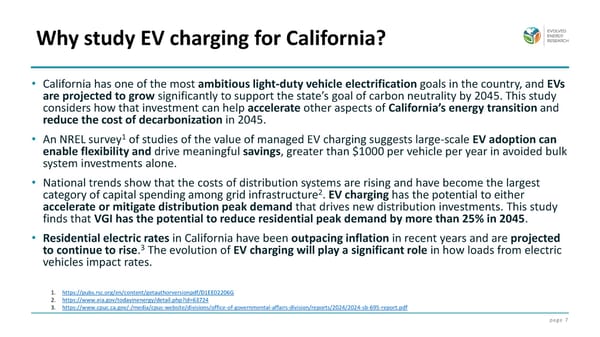page 7 • California has one of the most ambitious light-duty vehicle electrification goals in the country, and EVs are projected to grow significantly to support the state’s goal of carbon neutrality by 2045. This study considers how that investment can help accelerate other aspects of California’s energy transition and reduce the cost of decarbonization in 2045. • An NREL survey1 of studies of the value of managed EV charging suggests large-scale EV adoption can enable flexibility and drive meaningful savings, greater than $1000 per vehicle per year in avoided bulk system investments alone. • National trends show that the costs of distribution systems are rising and have become the largest category of capital spending among grid infrastructure2. EV charging has the potential to either accelerate or mitigate distribution peak demand that drives new distribution investments. This study finds that VGI has the potential to reduce residential peak demand by more than 25% in 2045. • Residential electric rates in California have been outpacing inflation in recent years and are projected to continue to rise.3 The evolution of EV charging will play a significant role in how loads from electric vehicles impact rates. Why study EV charging for California? 1. https://pubs.rsc.org/en/content/getauthorversionpdf/D1EE02206G 2. https://www.eia.gov/todayinenergy/detail.php?id=63724 3. https://www.cpuc.ca.gov/-/media/cpuc-website/divisions/office-of-governmental-affairs-division/reports/2024/2024-sb-695-report.pdf
 Exploring the Value of Vehicle to Grid (V2G) for California Page 6 Page 8
Exploring the Value of Vehicle to Grid (V2G) for California Page 6 Page 8